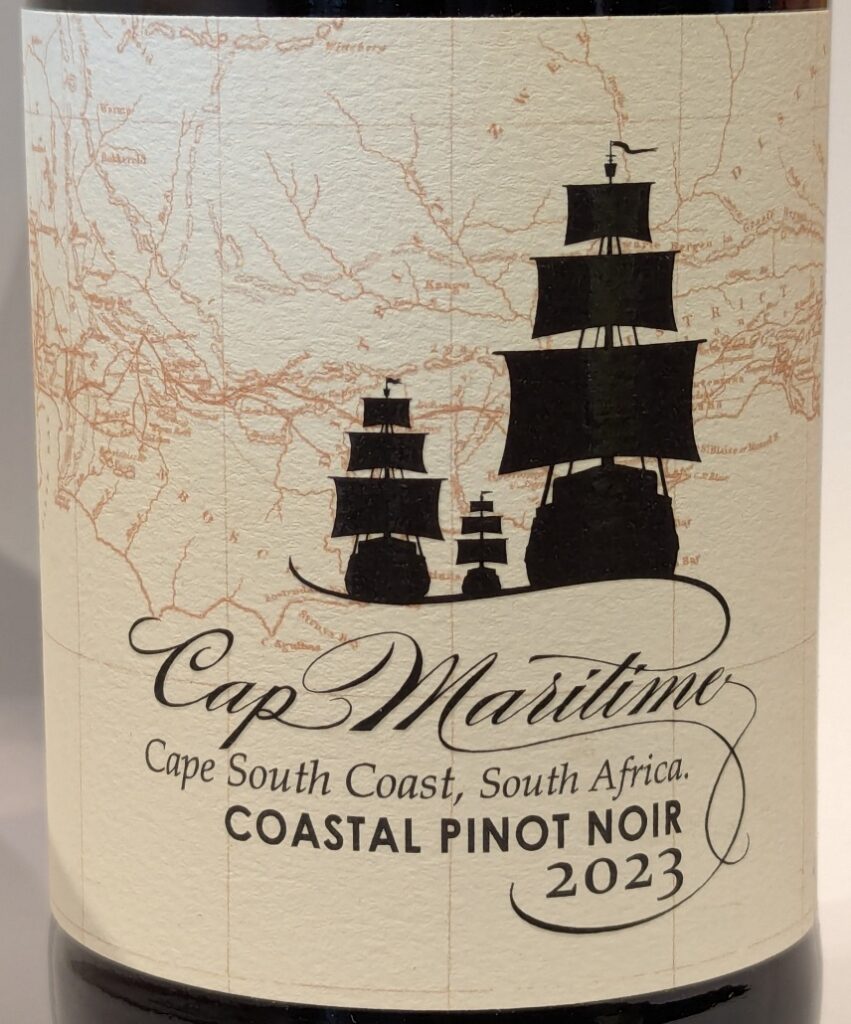
Tesco has introduced another noteworthy addition to its wine range as part of its, previously mentioned, continued focus on premium offerings. Cap Maritime Pinot Noir, imported by New Generation Wines, is also available through select independent wine merchants.
This South African wine comes from the Upper Hemel-en-Aarde Valley in the Cape South Coast region. The 2023 vintage, by winemaker Gottfried Mocke, has an alcohol level of 13% and reflects a deliberate winemaking style that prioritises texture and perfume over the opulence of primary fruit. Aged for 12 months in French barriques, the wine is also vegan and has earned a high 4.2 rating on Vivino.
When I first tried this wine with family and friends, it initially seemed reserved in flavour. Some remarked on its understated fruitiness, which actually aligns with the winemaker’s intent and I was surprised with its high Vivino rating. On my part, I noticed mushroom and earthy notes, while one of the more experienced tasters in the group detected a smoky bacon character. It was medium-bodied, which is fuller than what one might typically expect from a Pinot Noir and some several noted its smooth finish.
The next day, tasting the wine on my own, I had a much richer experience. Perhaps the additional time to breathe or the absence of distractions allowed its complexities to shine. I found deep earthy, savoury notes more reminiscent of top-tier New Zealand Pinot Noir. A caramel-like finish, which had been mentioned by others, became more apparent, enhancing the wine’s appeal.
In summary, this is a nuanced Pinot Noir that rewards patience and thoughtful contemplation. It is one of those wines that reveals its depth over time rather than making an immediate impression. Available at Tesco for £14, or £10.50 during their mix-six offer, it represents great value for those willing to give it the time and attention it deserves.













